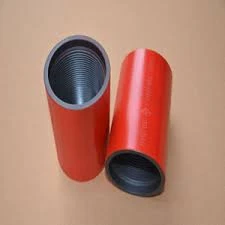- Afrikaans
- Albanian
- Amharic
- Arabic
- Armenian
- Azerbaijani
- Basque
- Belarusian
- Bengali
- Bosnian
- Bulgarian
- Catalan
- Cebuano
- Corsican
- Croatian
- Czech
- Danish
- Dutch
- English
- Esperanto
- Estonian
- Finnish
- French
- Frisian
- Galician
- Georgian
- German
- Greek
- Gujarati
- Haitian Creole
- hausa
- hawaiian
- Hebrew
- Hindi
- Miao
- Hungarian
- Icelandic
- igbo
- Indonesian
- irish
- Italian
- Japanese
- Javanese
- Kannada
- kazakh
- Khmer
- Rwandese
- Korean
- Kurdish
- Kyrgyz
- Lao
- Latin
- Latvian
- Lithuanian
- Luxembourgish
- Macedonian
- Malgashi
- Malay
- Malayalam
- Maltese
- Maori
- Marathi
- Mongolian
- Myanmar
- Nepali
- Norwegian
- Norwegian
- Occitan
- Pashto
- Persian
- Polish
- Portuguese
- Punjabi
- Romanian
- Russian
- Samoan
- Scottish Gaelic
- Serbian
- Sesotho
- Shona
- Sindhi
- Sinhala
- Slovak
- Slovenian
- Somali
- Spanish
- Sundanese
- Swahili
- Swedish
- Tagalog
- Tajik
- Tamil
- Tatar
- Telugu
- Thai
- Turkish
- Turkmen
- Ukrainian
- Urdu
- Uighur
- Uzbek
- Vietnamese
- Welsh
- Bantu
- Yiddish
- Yoruba
- Zulu
Stainless Steel Couplings for Efficient Connection in Fluid Systems and Industrial Applications
Understanding Stainless Steel Couplings A Comprehensive Guide
Stainless steel couplings are critical components used in various industrial applications, facilitating the connection of two shafts or pipes. These couplings are designed to transmit power or fluid efficiently and are favored for their durability and corrosion resistance. This article explores the features, types, applications, and advantages of stainless steel couplings, while also highlighting considerations for selecting the right coupling for specific needs.
Features of Stainless Steel Couplings
Stainless steel couplings are renowned for several key features
1. Corrosion Resistance The primary advantage of stainless steel is its resistance to rust and corrosion, making it an ideal choice for applications involving moisture or corrosive substances. This property enhances the lifespan of couplings, reducing the need for frequent replacements.
2. Strength and Durability Stainless steel offers high tensile strength and toughness, which allows couplings to withstand high pressure and mechanical stress. This attribute is crucial for heavy-duty applications.
3. Versatile Design Stainless steel couplings come in various designs, including rigid, flexible, and adjustable types, accommodating different operational requirements and conditions.
4. High-Temperature Resistance Many stainless steels can endure elevated temperatures without losing their structural integrity, making them suitable for high-temperature industrial processes.
5. Easy Maintenance Due to their smooth surfaces, stainless steel couplings require minimal maintenance, making them cost-effective over time.
Types of Stainless Steel Couplings
Stainless steel couplings come in various forms to meet specific operational requirements. Here are some common types
1. Rigid Couplings These couplings are used to connect two shafts that are precisely aligned. They do not allow any misalignment compensation. Commonly used in machinery where the alignment of components is guaranteed.
2. Flexible Couplings These couplings can accommodate misalignment between shafts, making them ideal for applications where precise alignment is challenging. They mitigate vibrations and reduce wear on connected components.
3. Adjustable Couplings These allow for adjustments in length, providing greater versatility in applications where the distance between shafts may vary.
4. Clamp Couplings These couplings feature a clamp mechanism that enables quick and easy assembly and disassembly, which is beneficial for maintenance and repairs.
stainless steel coupling 1 2

Applications of Stainless Steel Couplings
Stainless steel couplings are employed across various industries due to their reliability and performance. Common applications include
- Manufacturing Stainless steel couplings are prevalent in conveyors, mixers, and other machinery requiring power transmission.
- Pumping Systems In water and wastewater treatment, stainless steel couplings connect pumps to motors, ensuring a secure and efficient flow.
- Food and Beverage Due to their resistance to corrosion and growth of bacteria, stainless steel couplings are widely used in food processing and packaging applications.
- Oil and Gas The oil and gas industry demands robust couplings that can withstand extreme conditions, making stainless steel an ideal choice for connecting drilling rigs and pipelines.
- Automotive In the automotive sector, these couplings are used in drivetrains and other critical systems that necessitate durability and performance.
Advantages of Using Stainless Steel Couplings
The benefits of using stainless steel couplings extend beyond their basic functionality
- Longer Lifespan Their resistance to corrosion and mechanical wear ensures a longer operational life, reducing overall maintenance costs.
- Improved Safety High-strength stainless steel couplings contribute to safer operation by ensuring that components remain securely attached under various conditions.
- Environmental Compliance Stainless steel is recyclable, making it an environmentally-friendly choice for manufacturers looking to reduce their carbon footprint.
Conclusion
In summary, stainless steel couplings are indispensable components in many industrial applications, offering a combination of durability, strength, and resistance to environmental factors. Understanding the features, types, and applications of these couplings will aid in selecting the right product for specific needs, ultimately enhancing efficiency and reliability in various operations. As industries continue to evolve and emphasize sustainability, the role of stainless steel couplings is likely to become even more critical in meeting these demands while ensuring optimal performance.
-
Tubing Pup Joints: Essential Components for Oil and Gas OperationsNewsJul.10,2025
-
Pup Joints: Essential Components for Reliable Drilling OperationsNewsJul.10,2025
-
Pipe Couplings: Connecting Your World EfficientlyNewsJul.10,2025
-
Mastering Oilfield Operations with Quality Tubing and CasingNewsJul.10,2025
-
High-Quality Casing Couplings for Every NeedNewsJul.10,2025
-
Boost Your Drilling Efficiency with Premium Crossover Tools & Seating NipplesNewsJul.10,2025







